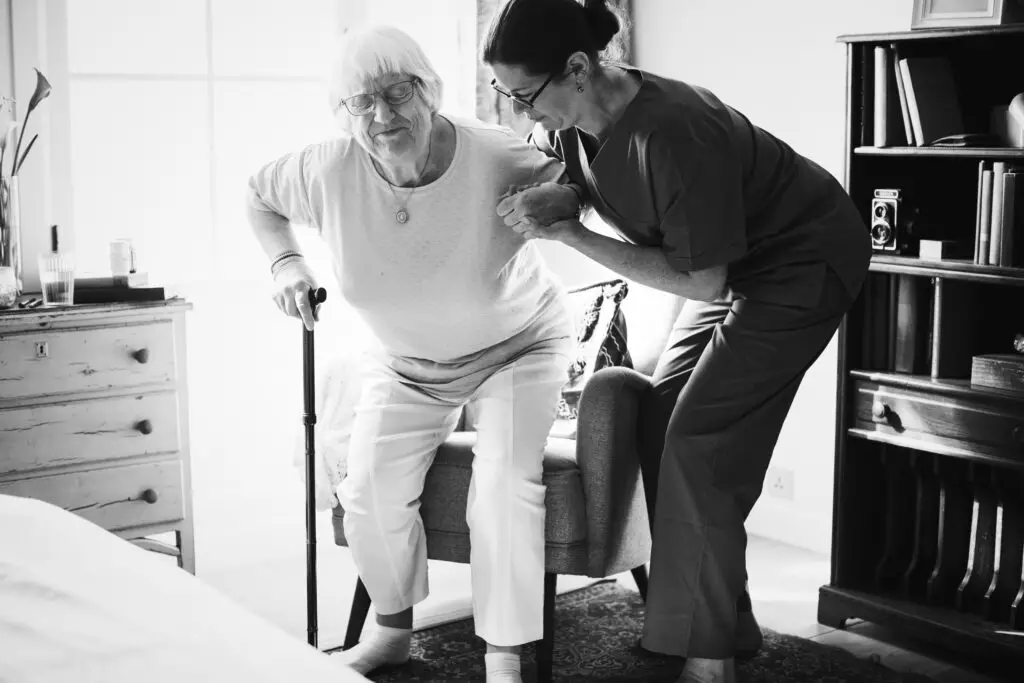Aging is an intrinsic and unavoidable aspect of our journey through life. As we grow older, our bodies undergo various changes, both physical and psychological. Aging care is a topic of great significance in today’s world, as the global population continues to age at an unprecedented rate. This comprehensive guide explores the various aspects of aging care, from understanding the aging process to planning for the care of our elderly loved ones.
In this article, we will delve into the science of aging, the need for aging care, the types of aging care available, planning for aging care, the role of caregivers, services and resources, healthy aging, dementia and Alzheimer’s care, end-of-life care, technology’s impact, and the legal and ethical considerations surrounding aging care.
Table of Contents
I. Introduction
A. Defining Aging Care
Aging care, also known as elderly care or geriatric care, encompasses a range of services and support designed to meet the unique needs of older adults. It focuses on promoting the physical, emotional, and social well-being of elderly individuals.
B. Why Aging Care Matters
Aging care is essential because it helps older adults maintain their quality of life, independence, and dignity. It ensures that they receive the necessary support to cope with the challenges of aging.
C. Scope of the Article
This article provides a comprehensive overview of aging care, addressing a wide range of topics related to the care of elderly individuals.
II. Understanding Aging
A. What is Aging?
Aging is a natural and complex process characterized by a gradual decline in various physiological functions, leading to increased vulnerability to diseases and a higher risk of mortality.
B. The Science of Aging
Exploring the cellular and molecular mechanisms that drive the aging process, including factors like telomere shortening, cellular senescence, and oxidative stress.
C. Factors Contributing to Aging
Examining the genetic, environmental, and lifestyle factors that contribute to the rate at which individuals age.
Aging is a process that affects everyone. It is not just about wrinkles and gray hair; it involves profound changes in the body and mind. While aging is a natural part of life, understanding it is crucial to provide the best care and support to our elderly population.

III. The Aging Process
A. Biological Changes
- Cellular Senescence: The cells in our body age over time, leading to various health challenges. Cellular senescence denotes the point at which cells gradually lose their capacity to replicate and operate effectively. As we age, more cells become senescent, which can contribute to age-related diseases.
- Telomere Shortening: The role of telomeres in the aging process. Telomeres act as protective caps at the tips of our chromosomes. They shorten with each cell division, and when they become critically short, it can lead to cell death or senescence.
- Oxidative Stress: How oxidative stress accelerates aging. Oxidative stress happens when there’s an uneven balance between free radicals and the body’s ability to neutralize their damaging impact. It can damage cells and DNA, contributing to aging.
B. Psychological Aspects
- Cognitive Decline: The changes in cognitive function that often accompany aging. Cognitive decline can involve difficulties in memory, problem-solving, and decision-making. It is a natural part of aging, but its severity varies among individuals.
- Emotional Well-being: Addressing the emotional challenges of aging. Older adults may face emotional challenges such as depression and loneliness. Emotional well-being is essential for a good quality of life in old age.
Aging isn’t just about the physical changes; it’s also about how our minds and emotions evolve. Understanding the science behind aging, from cellular senescence to cognitive changes, can help us provide better care and support.
IV. The Need for Aging Care
A. Health Challenges in Old Age
- Chronic Diseases: The prevalence of chronic health conditions among the elderly. Older adults are more likely to have chronic diseases such as diabetes, heart disease, and arthritis. Managing these conditions is a significant part of aging care.
- Mobility Issues: The physical limitations and mobility challenges that older adults may face. Reduced mobility can affect an individual’s independence. Aging care includes measures to address and improve mobility.
- Mental Health Concerns: The importance of mental health support for seniors. Mental health issues, including depression and anxiety, can be common in old age. Aging care involves addressing and treating these conditions.
B. Social and Economic Implications
The impact of an aging population on society and the economy, including the need for social services and retirement planning.
Our elderly population faces unique health challenges, including chronic diseases and mobility issues. These challenges require comprehensive care and support to ensure a good quality of life in old age.

V. Types of Aging Care
A. Home-Based Care
The benefits and challenges of providing care for the elderly in their own homes.
Home-based care allows elderly individuals to receive care in the comfort of their homes. It includes services like in-home nursing, assistance with daily tasks, and companionship.
B. Assisted Living
Discussing assisted living facilities and the level of care they offer to residents.
Assisted living facilities offer a balanced option between living independently and residing in nursing homes. They offer support with daily activities while promoting independence.
C. Nursing Homes
Exploring the role of nursing homes in providing comprehensive care for older adults.
Nursing homes are long-term care facilities that offer 24/7 medical care and assistance with daily tasks for individuals with significant health needs.
D. Hospice Care
Understanding the specialized care provided to individuals facing terminal illnesses.
Hospice care is dedicated to offering comfort and assistance to those dealing with illnesses that limit their life expectancy. It emphasizes quality of life and pain management.
VI. Planning for Aging Care
A. Assessing Your Needs
Guidelines for assessing the specific care needs of elderly individuals and creating a customized care plan.
Assessing an individual’s needs is the first step in planning for aging care. It involves considering their physical health, cognitive abilities, and emotional well-being.
B. Financial Considerations
Exploring the financial aspects of aging care, including the cost of care and potential funding sources.
Aging care can be expensive, and understanding the financial aspects is essential. It includes budgeting, insurance options, and potential government assistance.
C. Legal Preparations
The importance of legal preparations, such as power of attorney and advance directives, in aging care planning.
Legal preparations ensure that an individual’s wishes are respected, and the right decisions are made regarding their care, finances, and medical treatment.
VII. Caregivers and Their Role
A. Family Caregivers
The critical role of family members in providing emotional and practical support to aging loved ones.
Family caregivers play a significant role in the lives of older adults. They offer companionship, help with everyday activities, and emotional assistance.
B. Professional Caregivers
Examining the role of trained professionals in aging care and the services they provide.
Professional caregivers, including nurses and home health aides, offer specialized care and medical support to elderly individuals.
C. Challenges Faced by Caregivers
The physical and emotional challenges faced by caregivers, including burnout and stress.
Caregivers often face physical and emotional strain as they provide care for aging loved ones. Addressing these difficulties and reaching out for support when necessary is crucial.

VIII. Aging Care Services and Resources
A. Government Programs
An overview of government programs and initiatives that support aging care, including Medicare and Medicaid.
Government programs provide financial assistance and healthcare coverage to older adults. Understanding these programs is crucial for accessing the right care.
B. Non-Profit Organizations
Highlighting the role of non-profit organizations that offer assistance and resources to seniors and their caregivers.
Non-profit organizations often provide valuable support, from meal delivery to transportation services, for elderly individuals.
C. Private Services
Exploring private services and options for aging care, including in-home care agencies.
Private services offer a range of choices for aging care, allowing individuals to tailor their care plans to their specific needs.
D. Support Groups
The importance of support groups for caregivers and seniors, providing emotional and practical support.
Support groups offer a sense of community and understanding for caregivers and seniors facing similar challenges. They provide a safe space to share experiences and seek advice.
IX. Healthy Aging
A. Nutrition and Diet
The role of a healthy diet in promoting well-being and longevity in old age.
A well-balanced diet is essential for maintaining health in old age. It provides the necessary nutrients to support physical and cognitive function.
B. Physical Activity
Regular physical activity brings multiple advantages in preserving both physical and mental well-being.
Exercise plays a crucial role in maintaining mobility, strength, and cognitive function in old age. It also contributes to emotional well-being.
C. Mental Stimulation
The importance of cognitive engagement and mental exercises in healthy aging.
Mental stimulation through activities like puzzles, reading, and learning new skills can help maintain cognitive abilities and prevent cognitive decline.
D. Preventive Healthcare
The significance of regular check-ups, vaccinations, and preventive healthcare measures.
Preventive healthcare includes regular health check-ups, vaccinations, and screenings to detect and manage health issues early.
X. Dementia and Alzheimer’s Care
A. Understanding Dementia
Defining dementia, its types, and the challenges it presents for both patients and caregivers.
Dementia is a group of cognitive disorders characterized by memory loss, impaired thinking, and changes in behavior. It presents unique challenges for both individuals with dementia and their caregivers.
B. Care Strategies for Dementia Patients
Exploring effective strategies and interventions for caring for individuals with dementia.
Caring for individuals with dementia requires specialized approaches, including creating a safe environment, managing behavioral symptoms, and providing emotional support.
C. Alzheimer’s Disease: A Closer Look
A comprehensive exploration of Alzheimer’s disease, including what causes it, how it progresses, and the treatments that are available.
Alzheimer’s disease is the primary cause of dementia in most cases. Understanding its progression and available treatments is crucial for individuals and families dealing with the condition.

XI. End-of-Life Care
A. Palliative Care
The role of palliative care in providing comfort and support to individuals with life-limiting illnesses.
Palliative care is centered on enhancing the overall quality of life for people grappling with severe illnesses. It addresses physical, emotional, and spiritual needs.
B. Advance Directives
The importance of advance directives and end-of-life planning to ensure an individual’s wishes are honored.
Advance directives, such as living wills and healthcare proxies, allow individuals to express their preferences for medical treatment and end-of-life care.
C. Ethical Considerations
Exploring the ethical dilemmas and decision-making processes in end-of-life care.
End-of-life care often involves complex ethical decisions, such as the withholding or withdrawal of life-sustaining treatments.
XII. Technology and Aging Care
A. Assistive Devices
Highlighting technological innovations, such as mobility aids and communication devices, that enhance the quality of life for seniors.
Assistive devices, from hearing aids to mobility scooters, help older adults maintain their independence and improve their quality of life.
B. Telehealth in Aging Care
Exploring the role of telehealth in providing healthcare services to seniors, especially in remote areas.
Telehealth allows seniors to access medical services from the comfort of their homes, making healthcare more accessible, especially in rural areas.
C. Privacy and Security Concerns
Addressing the privacy and security challenges associated with using technology in aging care.
The use of technology in aging care raises concerns about data privacy and security. It’s essential to protect the personal information of older adults.
XIII. Longevity and Aging Care
A. Living Beyond 100
Exploring the concept of extreme longevity and its implications for aging care.
As advances in healthcare continue, more individuals are living well into their 90s and even beyond 100. This presents unique challenges and opportunities for aging care.
B. Financial Planning for Longevity
Discussing the financial strategies required to support a longer lifespan.
Longevity requires careful financial planning to ensure that individuals can maintain their quality of life throughout their extended years.
C. Emotional Well-being in Longevity
Addressing the emotional and psychological aspects of living a longer life.
Emotional well-being is crucial for individuals living longer lives. It involves staying socially engaged and maintaining a positive outlook.

XIV. Challenges in Aging Care
A. Access to Quality Care
The challenges in accessing quality aging care services, particularly in underserved areas.
Access to quality aging care can be limited in rural and underserved areas. Addressing this challenge is essential for ensuring that all individuals receive the care they need.
B. Ageism and Stigma
Examining age-related discrimination and the social stigma associated with aging.
Ageism is a form of discrimination based on a person’s age. It can lead to stereotypes and biases that negatively affect the elderly.
C. Cultural and Diversity Issues
Understanding how culture and diversity influence the aging experience and care needs.
Different cultures have unique perspectives on aging and may have specific care needs and traditions. Recognizing and respecting cultural diversity is essential in aging care.
XV. Innovations in Aging Care
A. Gerontechnology
Exploring the use of technology to enhance the well-being of older adults, from smart homes to wearable devices.
Gerontechnology involves the use of technology to improve the lives of older adults. This includes devices that enhance safety, communication, and healthcare monitoring.
B. Intergenerational Programs
Highlighting programs that foster interaction and mutual support between different age groups.
Intergenerational programs bring together people of different generations to share experiences and provide support to one another.
C. Research and Breakthroughs
The latest research and innovations in aging care, including potential breakthroughs in disease treatment and prevention.
Ongoing research is uncovering new approaches to aging care, from innovative treatments to potential methods for disease prevention.
XVI. Legal and Ethical Considerations
A. Elder Abuse and Neglect
Addressing the issue of elder abuse and the legal protections in place to prevent it.
Elder abuse can manifest in various ways, such as physical harm, emotional mistreatment, financial exploitation, and neglect. Legal protections are in place to prevent and address elder abuse.
B. Legal Rights of the Elderly
Exploring the legal rights and protections that older adults have in various aspects of their lives.
Older adults have legal rights in areas such as
1. Healthcare Decision-Making
- Older adults have the right to make decisions about their healthcare. This entails the right to agree to or decline medical treatment. Advance directives, such as living wills and healthcare proxies, allow individuals to specify their preferences regarding end-of-life care.
2. Financial Protection
- Laws and regulations are in place to protect older adults from financial exploitation and abuse. These protections include safeguards against fraudulent schemes and scams that target the elderly.
3. Housing Rights
- Housing discrimination against older adults is prohibited by law. The Fair Housing Act protects elderly individuals from being denied housing based on their age, among other factors.
4. Guardianship
- In situations where an older adult is unable to make decisions for themselves due to incapacity, legal guardianship may be established. The legal guardian is responsible for making decisions on behalf of the individual, ensuring their best interests are upheld.
5. Elder Rights Advocates
- Various organizations and advocates specialize in protecting the rights of the elderly. They provide legal assistance, education, and support to older adults to ensure their rights are respected.

XVII. Funding Aging Care
A. Insurance Options
An overview of insurance options, including long-term care insurance, and their role in financing aging care.
Insurance can play a significant role in funding aging care. Long-term care insurance, in particular, is designed to cover the costs associated with nursing homes, assisted living, and in-home care.
B. Government Assistance
Exploring government-funded programs and subsidies for seniors’ healthcare and long-term care.
Government assistance programs, such as Medicare and Medicaid, offer financial support for healthcare and long-term care services for older adults who meet specific criteria.
C. Private Financing
Options for private financing of aging care, including personal savings and investments.
Many older adults fund their care through personal savings, investments, and retirement accounts. Planning for these expenses is a crucial aspect of aging care.
XVIII. Global Perspectives on Aging Care
A. Aging Population Worldwide
An analysis of the global demographic shift toward an aging population.
Around the world, populations are aging, leading to changes in healthcare systems, retirement planning, and societal structures.
B. Different Approaches to Aging Care
Exploring how different countries address the challenges of aging and provide care for older adults.
Different nations have unique approaches to aging care, influenced by cultural, economic, and political factors. Learning from these approaches can provide valuable insights for improving care worldwide.
C. Lessons from Other Cultures
Learning from other cultures’ traditions and practices in aging care.
Various cultures have rich traditions and practices for caring for their elderly population. These practices often emphasize family and community support, which can inspire new approaches to aging care.
XIX. Conclusion
A. The Importance of Aging Care
Reiterating the significance of aging care in ensuring a dignified and comfortable old age.
Aging care is not just a healthcare issue; it’s a matter of preserving the dignity and well-being of our elderly population. It’s essential to prioritize and invest in aging care to ensure that older adults can enjoy their later years.
B. The Future of Aging Care
Discussing the evolving landscape of aging care and potential future developments.
The field of aging care is constantly evolving, with new technologies, research, and approaches emerging. The future of aging care holds the promise of better support, improved healthcare, and enhanced quality of life for older adults.
C. Empowering Aging Individuals
Emphasizing the importance of empowering older adults to make informed choices about their care.
Empowering older adults means involving them in decisions about their care, respecting their wishes, and ensuring that they have the resources and support to live their lives to the fullest.
Aging care is a multifaceted and complex field, encompassing numerous aspects of healthcare, legal protections, and societal support. It’s not only about addressing the physical and cognitive challenges of aging but also about recognizing the value and contributions of older adults. As our world continues to age, understanding and improving aging care will be essential to creating a more inclusive and compassionate society.

Frequently Asked Questions (FAQs):
Q1: What is aging care, and why is it important?
Aging care, also known as elderly care or geriatric care, encompasses various services and support to meet the unique needs of older adults. It’s crucial because it helps older individuals maintain their quality of life, independence, and dignity while coping with the challenges of aging.
Q2: What are some of the key challenges that older adults face in terms of their health?
Older adults commonly face challenges such as chronic diseases, mobility issues, and mental health concerns. Chronic diseases like diabetes and heart disease become more prevalent with age, and mobility limitations can affect independence. Additionally, mental health issues like depression and anxiety can be common in old age.
Q3: What are the different types of aging care available?
Aging care options include home-based care, assisted living, nursing homes, and hospice care. Home-based care allows seniors to receive assistance in their own homes, while assisted living and nursing homes provide varying levels of support in communal settings. Hospice care is specialized care for individuals with life-limiting illnesses.
Q4: How can I plan for aging care for myself or a loved one?
Planning for aging care involves assessing specific needs, considering financial aspects, and making legal preparations. It’s important to evaluate physical health, cognitive abilities, and emotional well-being, as well as to explore funding options and establish legal documents such as advance directives.
Q5: What is the role of caregivers in aging care?
Caregivers play a critical role in aging care. Family caregivers provide emotional and practical support to aging loved ones, while professional caregivers, such as nurses and home health aides, offer specialized care. Caregivers may face challenges like burnout and stress.
Q6: What are the financial considerations for aging care?
Aging care can be costly. Financial considerations include budgeting, exploring insurance options (like long-term care insurance), and understanding government assistance programs such as Medicare and Medicaid. Private financing options, like personal savings and investments, also play a role.
Q7: What legal rights do older adults have, especially in terms of healthcare decisions?
Older adults have the right to make decisions about their healthcare, including the right to consent to or refuse medical treatment. Advance directives, such as living wills and healthcare proxies, allow individuals to specify their preferences regarding end-of-life care.
Q8: How can technology benefit aging care?
Technology can enhance aging care through assistive devices like mobility aids and communication tools. Telehealth enables remote healthcare services, particularly in rural areas. However, privacy and security concerns must be addressed when using technology in aging care.
Q9: What are the challenges in aging care, and how can they be addressed?
Challenges in aging care include access to quality services, ageism, and cultural diversity issues. To address these challenges, it’s essential to expand access to care in underserved areas, combat age-related discrimination, and recognize the influence of culture and diversity in care needs.
Q10: How can I prepare for longevity and aging care in the future?
Preparing for longevity involves financial planning to support a longer lifespan, as well as emphasizing emotional well-being by staying socially engaged and maintaining a positive outlook.
These FAQs provide a starting point for understanding the multifaceted topic of aging care. For more in-depth information, refer to the comprehensive guide provided in the article.

